
In spite of angry auto workers, pockets of latent racism, and the width of the Pacific Ocean, America got really interested in Japan in the mid 1980s - cars, electronics, teppanyaki restaurants, and Pat Morita all fascinated the American masses, and unlike the 1940s, this time the attention was positive. Of course one of Japan's greatest exports, the giant robot cartoon, had been steadily infiltrating American culture since the 1960s, but it would be the '80s before these mechanical marvels really gained a foothold in the form of Voltron, in the various iterations of Transformers and Go-Bots culled from extant Japanese designs, and, of course, the subject of today's feature, Robotech. Or, as it was called before Matchbox got involved, Macross.
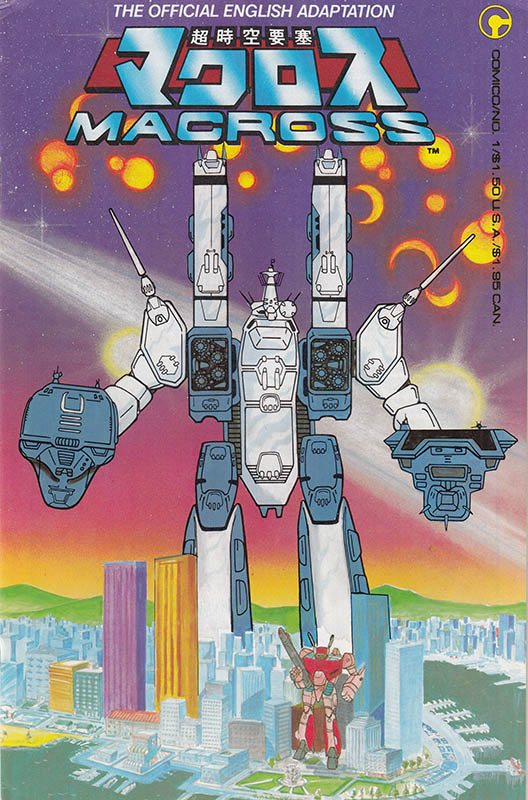
Seen here wildly out of scale, the Super Dimension Fortress Macross stars in his or hers or its first comic book, a real gamble on the part of Comico because when this comic was published, the general American public had no idea what a "Macross" was. They didn't know that it was a giant alien transforming battle fortress that had crashlanded into a Pacific island in 1999, causing WWIII before anybody realized what had happened, and eventually revealing its high-tech secrets to the awkwardly named world government military arm "UN SPACY." They simply had no clue that the combination of transforming jet-plane robots, idol singer romance, and eerie space aliens defeated by pop music had taken Japan by storm. There was simply no way for Americans to learn these things. Or was there?
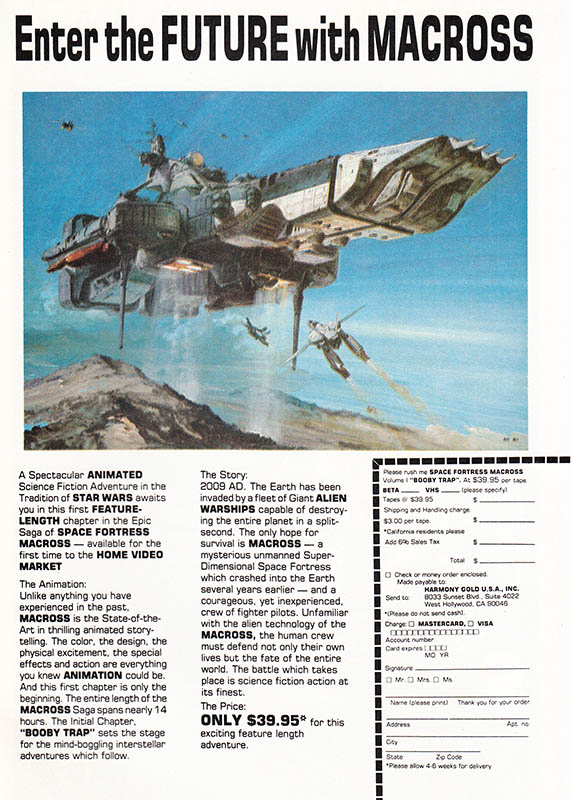
Strangely enough, there was; part of the mission of this Macross comic book was to sell this Macross video tape, one of the earliest attempts to sell Japanese animation directly to the home video market. Did it work? Were there legions of Americans ready to shell out $39.95 for a cartoon? That's $97 in today's money! For a VHS tape that now clogs the shelves at thrift stores! Well, let's see. Maybe this comic book really can sell a forty dollar videotape. It would have to be a REALLY GOOD comic book, I think.

Rather than just photograph the actual animation artwork, Comico made the choice to sort of reverse-engineer the whole thing, copying scenes from the TV in ink and painting backgrounds, and sure, it's an interesting experiment, but does it really work?
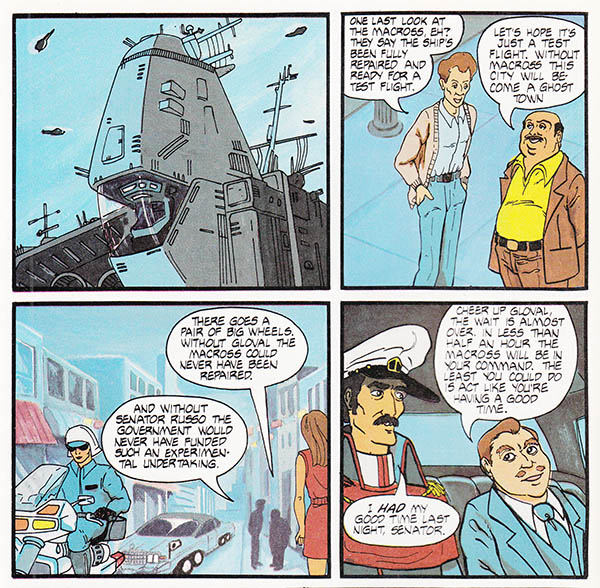
Hey, I'm not saying it's not an interesting look, the soft pastel backgrounds jarring up against the weirdly flat characters, the perspective doing strange things (check out that flying motorcycle in the lower left panel), and the exposition clunking everything up as Americans, perhaps for the first time, gamely attempt to imitate the big-eyed Japanese animation style.
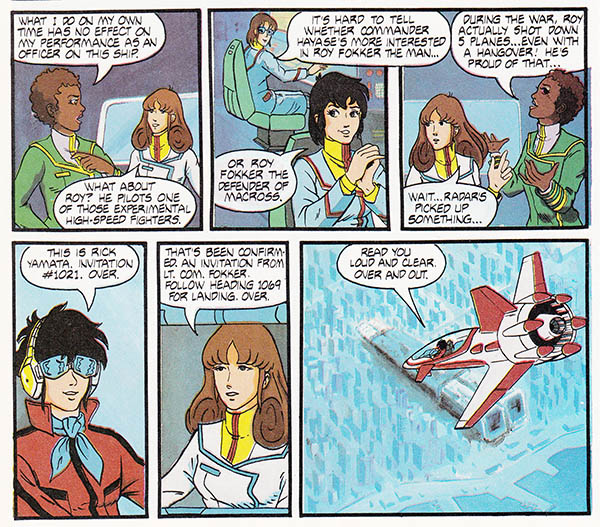
One of the unique features of the Macross TV show was the large female cast. Women in SF robot cartoons had traditionally been relegated to being the hero's girlfriend, or the daughter of the scientist who built the giant robot, or both, but Macross gives us a whole spaceship full of, and occasionally commanded by, professional ladies who have come a long way, baby, even if their fighter pilot boyfriends have drinking problems that they're proud of.
Here also we see our nominal hero, Rick Yamata, or sometimes Rick Yamada, an ace stunt pilot whose name will be finalized along with the Matchbox deal. But more about that later.
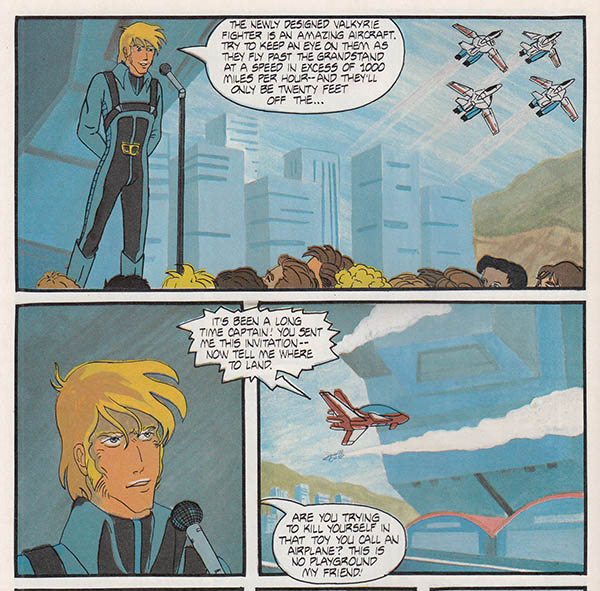
Hey, you've got a comic book drawn from images taken from an animated cartoon, which is meant to be seen by the human eye at 24 frames a second. Just picking images at random and hoping they suggest the movement depicted on the TV, well, sometimes that works, and... well, actually that almost never works.
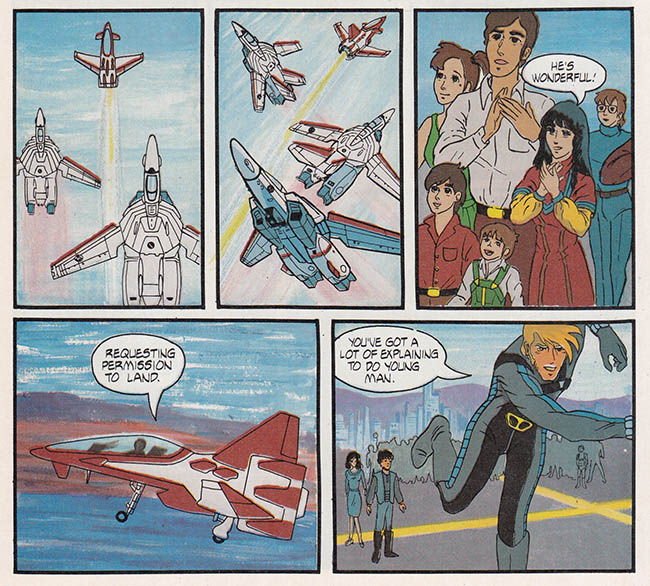
Just imagine these images were zooming around on your TV screen with music and sound effects. That would be pretty awesome, wouldn't it? Well, for only $39.95....
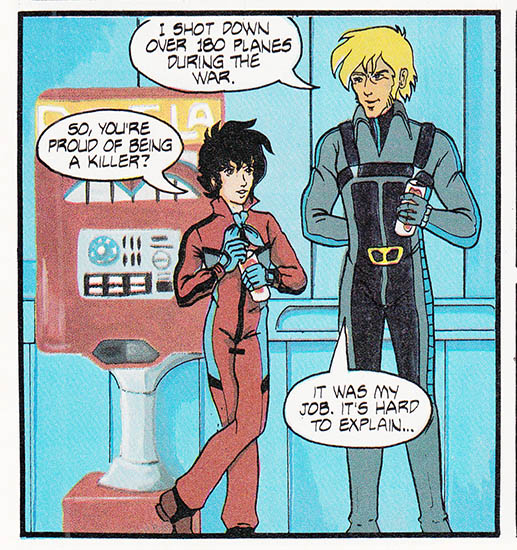
Okay, air ace Roy Fokker, first it was five planes, now it's 180 planes. Make up your mind, drunky.
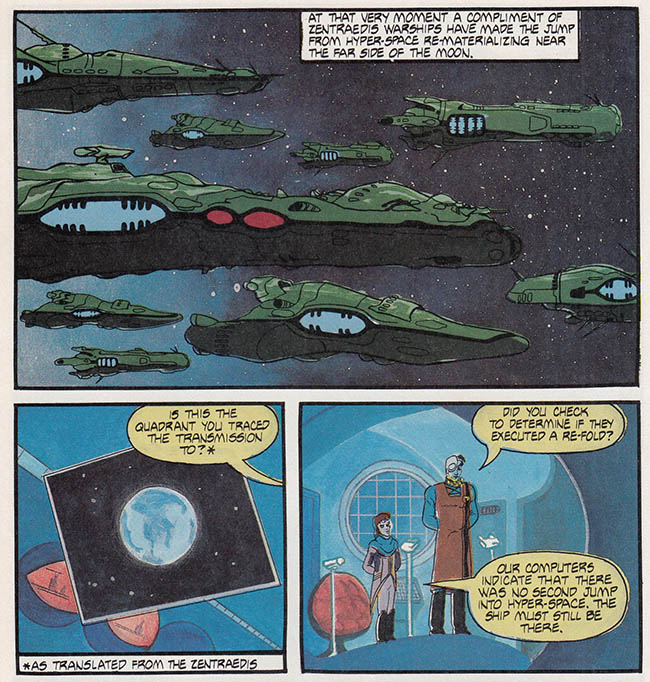
Meanwhile in outer space, our eerie space aliens, the Zentraedi, or Zentradeis, whichever, well, they have warped-in from hyper-space and that means trouble's on the way! Will the Macross be ready in time to meet the alien threat?
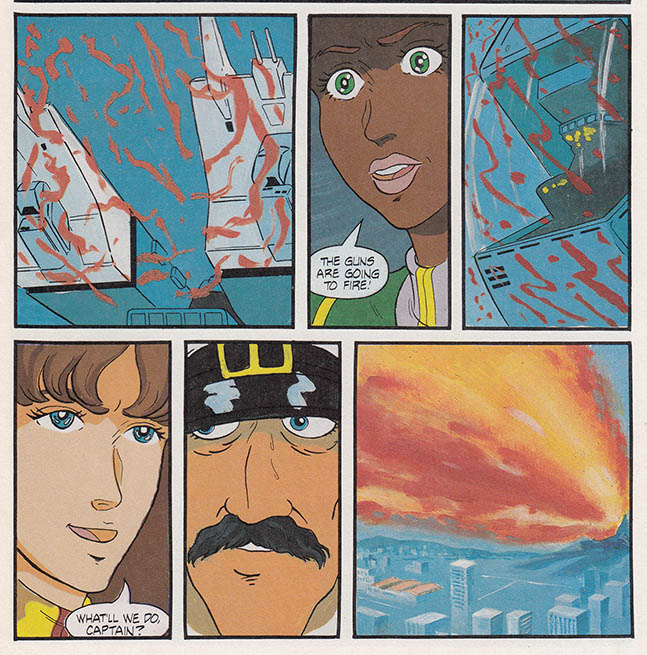
Yes, the Macross WILL be ready in time, in fact it just fires its main wave-motion gun type super weapon by itself, as members of the bridge crew look on in shock, amusement, or resignation.
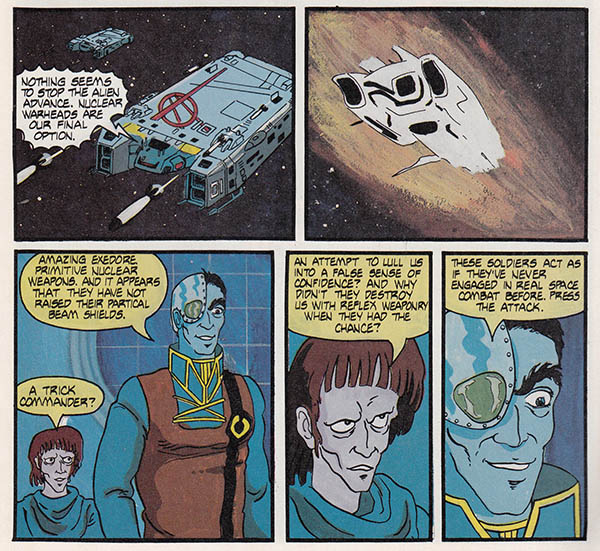
Meanwhile in outer space, the Earth space patrol is forced to use nuclear weapons against the oncoming alien hordes. The alien hordes are unimpressed.
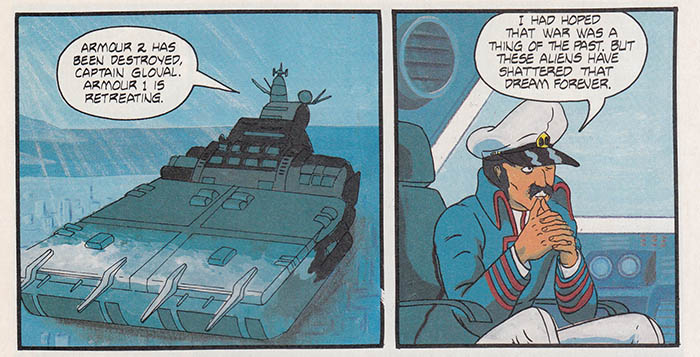
Panel one: a high-tech couch sits in a bathtub. Panel two: career military man regrets entire career.
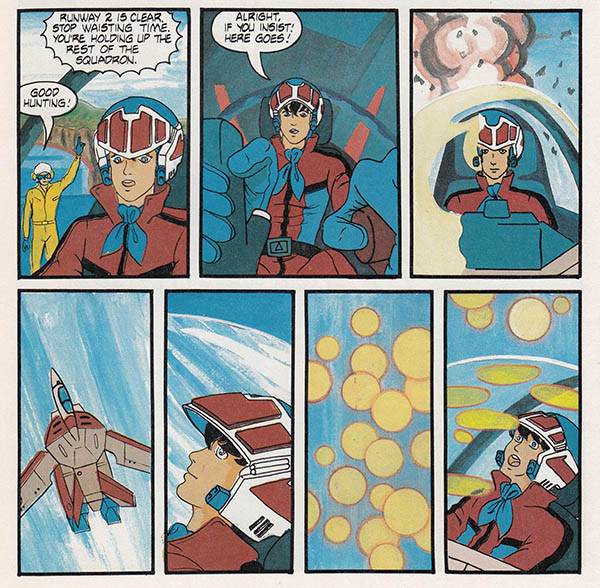
Stuck inside a Valkyrie fighter when the aliens attack, Rick Yamata blasts off into combat, which is represented here by yellow dots that again, looked a lot more impressive when they were moving and had music and sound effects. It's only $39.95 guys. You can watch it over and over again.
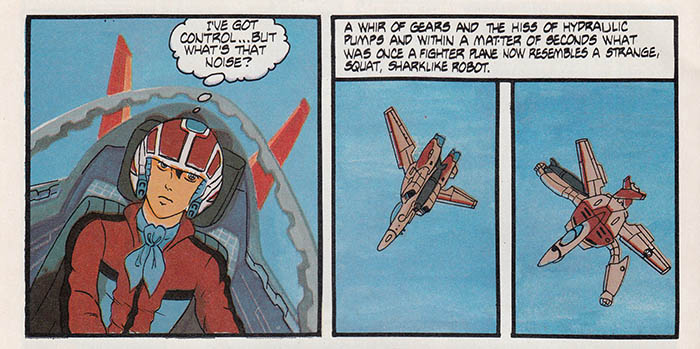
What's that? This high-tech fighter plane transforms into a robot? Who would have thought such a thing was possible or even attractive to legions of toy-buying youths?
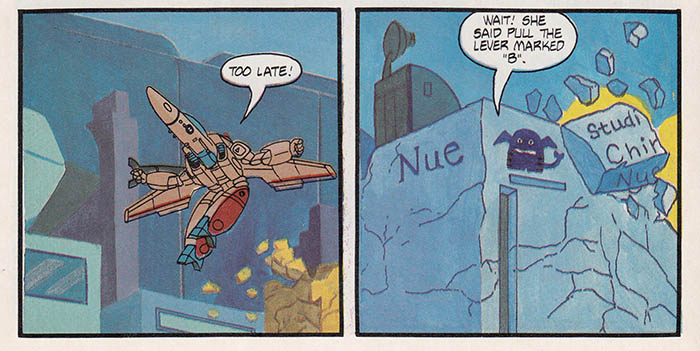
By the way, Studio Nue was the studio that created the mechanical design for Macross and also worked on anime shows you might have heard of, like Space Battleship Yamato and Captain Harlock, and shows you might not have heard of, like Zero Tester, Ginguiser, and Technopolice 21C, and as really talented craftsmen they were probably kind of weirded out seeing a throwaway reference to their studio included in this copy of a copy of a copy of their work. But that's international licensing for you, I guess.
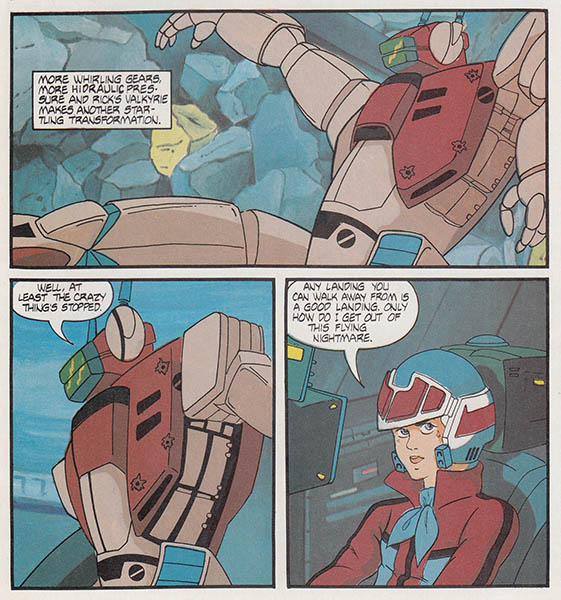
But wait! Applying even more "hidraulic" pressure and Rick's jet plane transforms from awkward "plane with arms" to a full on human being type robot thing! The kids will go NUTS for this!
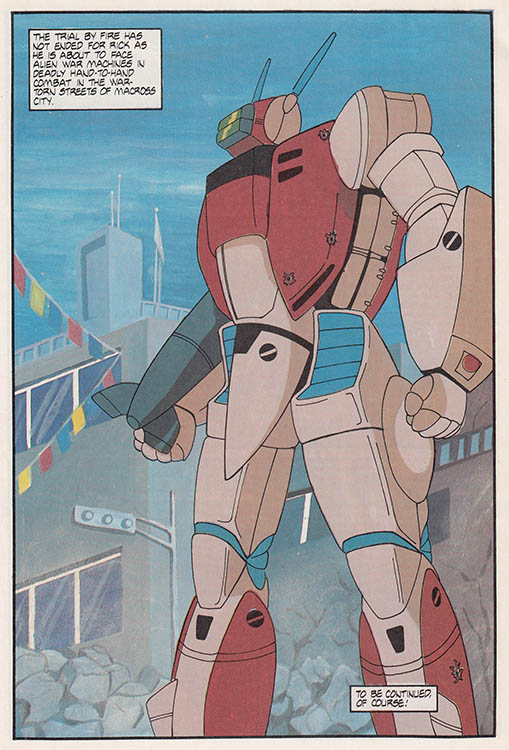
If you're following along at home, I hope you've folded the wings properly and have moved the arms up to the shoulders without breaking anything. No, don't force it! Here, let me do it. I wanna do it! Mom!
So, obviously what happened was that Harmony Gold got together with Matchbox, who already had a "Robotech" trademark used to sell model kits from various Japanese cartoons, and they merely applied the "Robotech" name to Macross, tacked on two other unrelated Japanese cartoons that also featured robot type mechanical elements, dubbed them into English, syndicated the whole thing across America, and sold a whole shedload of transforming robot toys to American kids. By the way what had been one "Macross" comic book became three "Robotech" comic books, and they also wisely abandoned the idea of trying to cel paint comic book art.

One of the more convenient parts of drawing licensed toy comics is that occasionally you can just draw those licensed toys right as they appear on the packaging. Remember at this point there was a Robotech comic book coming out every two weeks!
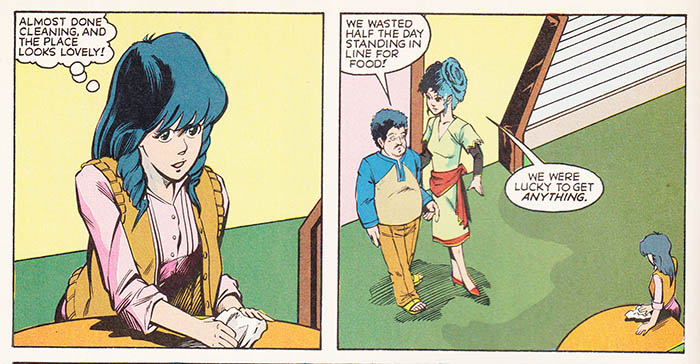
And then sometimes you get scenes like this where either Lynn Minmay has been shrunk, or her aunt and uncle have become giants. Or maybe the space-warp field of the Macross is generating localized distortions in the fabric of existence iself! Right?
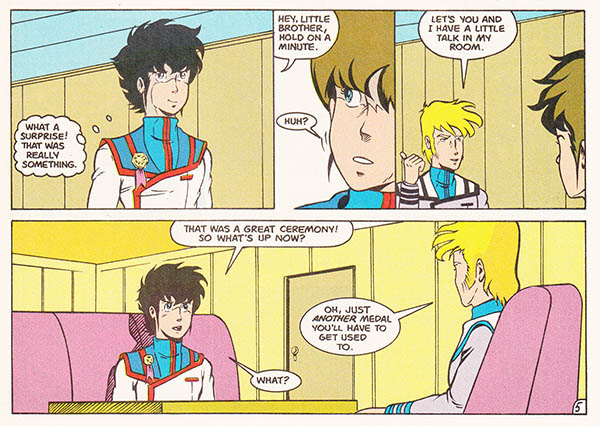
Sometimes the Robotech artist wasn't really comfortable drawing the Robotech characters, but more than made up for it by giving the reader lots of ceilings, walls, panelling, couches, and doors.
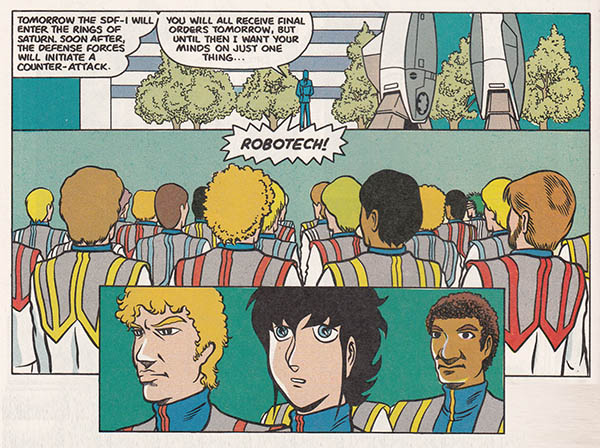
And sometimes the artist just plain got tired of aping Macross character designer Haruhiko Mikimoto and instead went off in a new and surprisingly awkward direction.
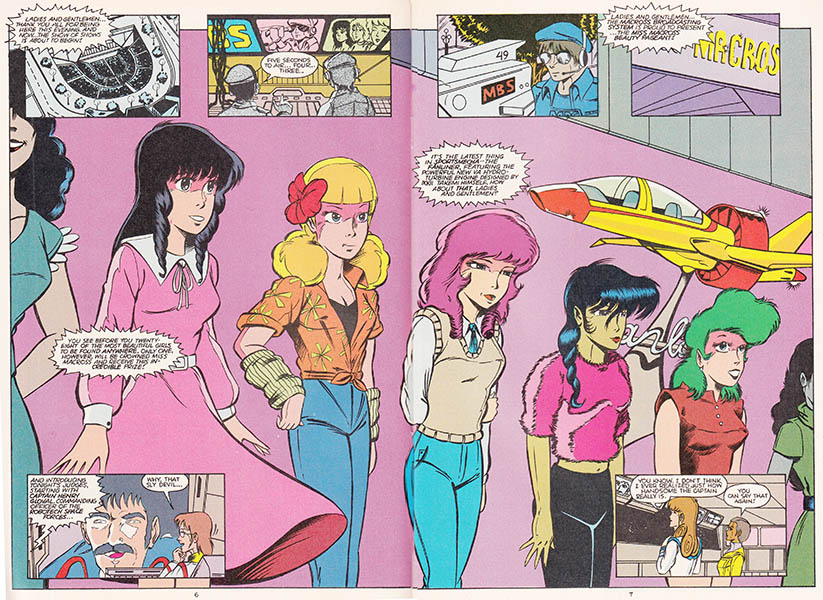
The early Macross story arc culminated in the Miss Macross beauty contest, where Lynn Minmay challenged Penny from Inspector Gadget, Sweater-Vest Amputee Gal, Asian Sex Robot #23, and May I Take Your Order Yes I Know I Have Green Hair Thank You lady for the right to wear the Miss Macross crown and sash and to wield the ultimate power over life and death given to Miss Macross.
Sure, people enjoyed reading these comics - I know I read them religiously until Robotech started airing in our market, at which point my purchases of Robotech comics declined sharply. But as a way to enjoy Robotech, these comics paled in comparison to the real thing, a cartoon that pretty much gave us anime nerd-dom as we know it today, with their fan clubs and their t-shirts and everything.
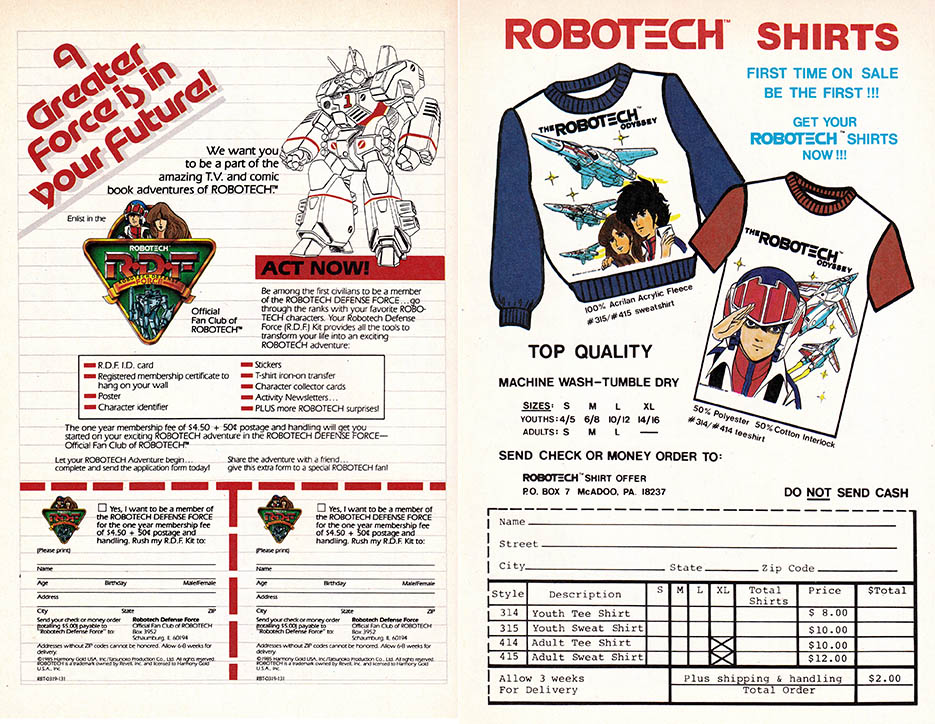
And yeah, Japan had its own Macross comics too!
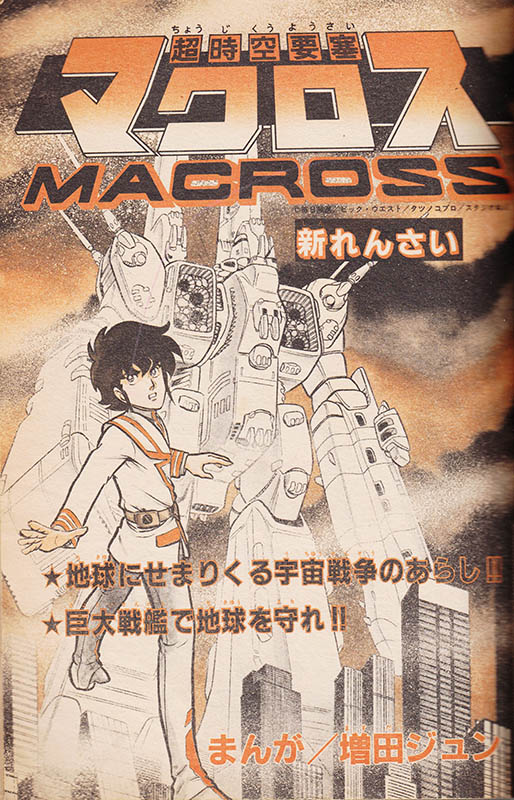
Sadly the world of 1984 was a long, long way away from being a place where Japanese comics could get published in the West without being retitled, renamed, traced laboriously from the TV screen, and used to pitch $39.95 videotapes. Let's hear it for the now!
PREVIOUS STUPID COMICS
NEXT STUPID COMICS
BACK TO STUPID COMICS INDEX
BACK TO MAIN INDEX

























